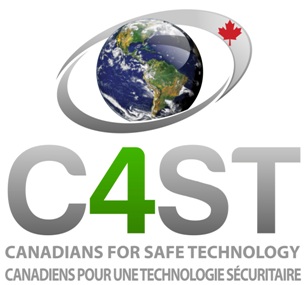Letter from the American Academy of Pediatrics to the FCC Regarding Radiofrequency Electromagnetic Radiation Standards
- 0 Comments
Letter from the President of the American Academy of Pediatrics (comprising 60,000 health professionals) to the Acting Commissioner of the Federal Communications Commission (FCC) and the Commissioner of the U.S. Food and Drug Administration (FDA). The letter urges the FCC to adopt radiofrequency (RF) electromagnetic radiation standards that protect children and pregnant women; reflect current use standards (The FCC standards were established in 1996 when approximately 44 million people in the United States had mobile phones. Today, there are more than 300 million mobile phones in use and an individual’s number and length of calls per day has greatly increased.); provide consumer disclosure of RF exposure of individual cell phones.
August 29, 2013
The Honorable Mignon L. Clyburn
Acting Commissioner
Federal Communications Commission
445 12th Street SW
Washington, DC 20054
The Honorable Dr. Margaret A. Hamburg
Commissioner
U.S. Food and Drug Administration
10903 New Hampshire Avenue
Silver Spring, MD 20993
Dear Acting Chairwoman Clyburn and Commissioner Hamburg:
The American Academy of Pediatrics (AAP), a non-profit professional organization of 60,000 primary care pediatricians, pediatric medical subspecialists, and pediatric surgical specialists dedicated to the health, safety and well-being of infants, children, adolescents, and young adults appreciates this opportunity to comment on the Proposed Rule “Reassessment of Exposure to Radiofrequency Electromagnetic Fields Limits and Policies” published in the Federal Register on June 4, 2013.
In the past few years, a number of American and international health and scientific bodies have contributed to the debate over cell phone radiation and its possible link to cancer. The International Agency for Research on Cancer (IARC), part of the United Nations’ World Health Organization, said in June 2011 that a family of frequencies that includes mobile-phone emissions is “possibly carcinogenic to humans.” The National Cancer Institute has stated that although studies have not demonstrated that RF energy from cell phones definitively causes cancer, more research is needed because cell phone technology and cell phone use are changing rapidly. These studies and others clearly demonstrate the need for further research into this area and highlight the importance of reassessing current policy to determine if it is adequately protective of human health.
As radiation standards are reassessed, the AAP urges the FCC to adopt radiation standards that:
- Protect children’s health and well-being. Children are not little adults and are disproportionately impacted by all environmental exposures, including cell phone radiation. Current FCC standards do not account for the unique vulnerability and use patterns specific to pregnant women and children. It is essential that any new standard for cell phones or other wireless devices be based on protecting the youngest and most vulnerable populations to ensure they are safeguarded throughout their lifetimes.
- Reflect current use patterns. The FCC has not assessed the standard for cell phone radiation since 1996. Approximately 44 million people had mobile phones when the standard was set; today, there are more than 300 million mobile phones in use in the United States. While the prevalence of wireless phones and other devices has skyrocketed, the behaviors around cell phone uses have changed as well. The number of mobile phone calls per day, the length of each call, and the amount of time people use mobile phones has increased, while cell phone and wireless technology has undergone substantial changes. Many children, adolescents and young adults, now use cell phones as their only phone line and they begin using wireless phones at much younger ages. Pregnant women may carry their phones for many hours per day in a pocket that keeps the phone close to their uterus. Children born today will experience a longer period of exposure to radio-frequency fields from cellular phone use than will adults, because they start using cellular phones at earlier ages and will have longer lifetime exposures. FCC regulations should reflect how people are using their phones today.
- Provide meaningful consumer disclosure. The FCC has noted that it does not provide consumers with sufficient information about the RF exposure profile of individual phones to allow consumers to make informed purchasing decisions. The current metric of RF exposure available to consumers, the Specific Absorption Rate, is not an accurate predictor of actual exposure. AAP is supportive of FCC developing standards that provide consumers with the information they need to make informed choices in selecting mobile phone purchases, and to help parents to better understand any potential risks for their children. To that end, we support the use of metrics that are specific to the exposure children will experience.
The AAP supports the reassessment of radiation standards for cell phones and other wireless products and the adoption of standards that are protective of children and reflect current use patterns. If you have questions, please contact Clara Filice in the AAP’s Washington Office at 202/347-8600.
Sincerely,
Thomas K. McInerny, MD FAAP
President
